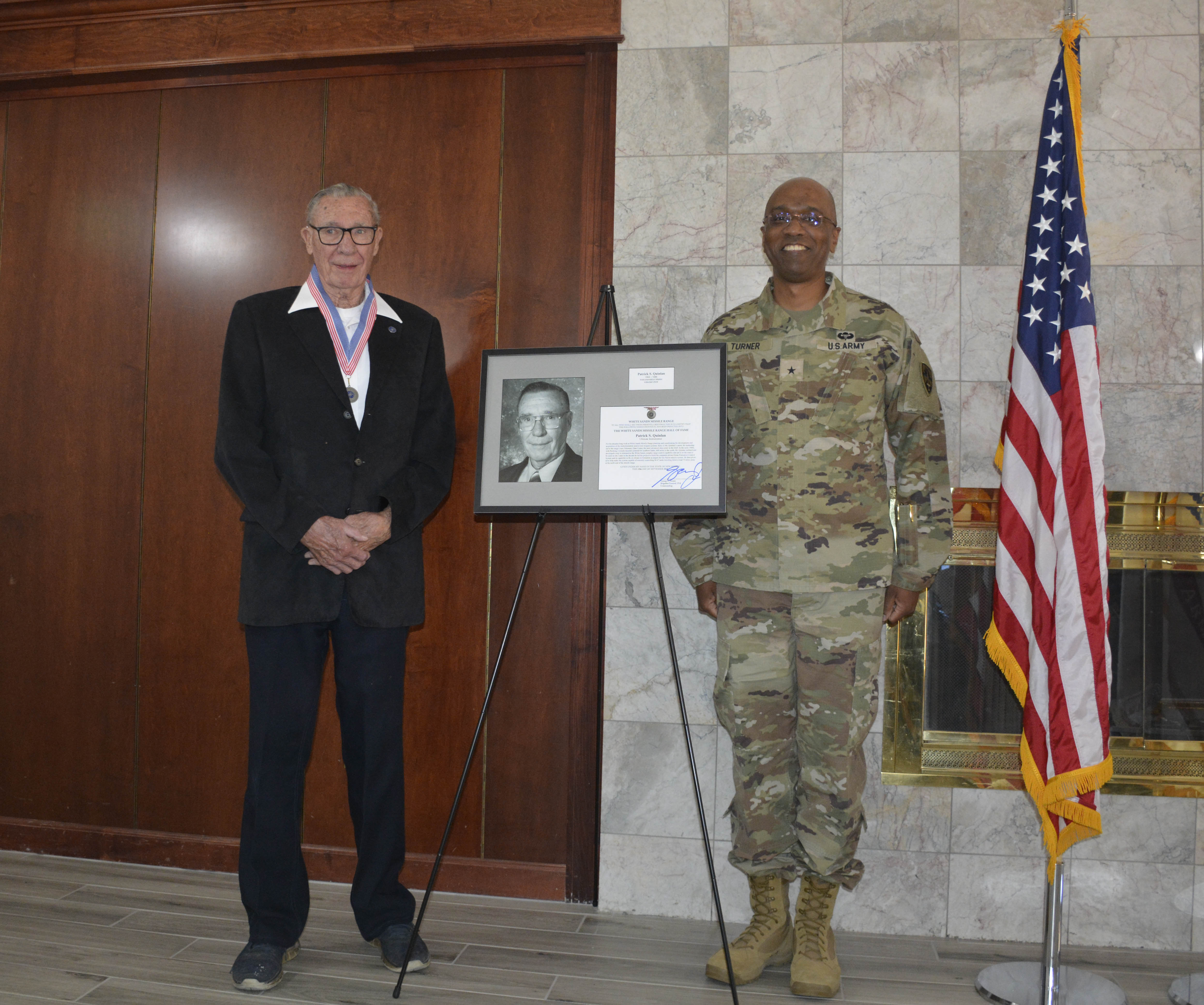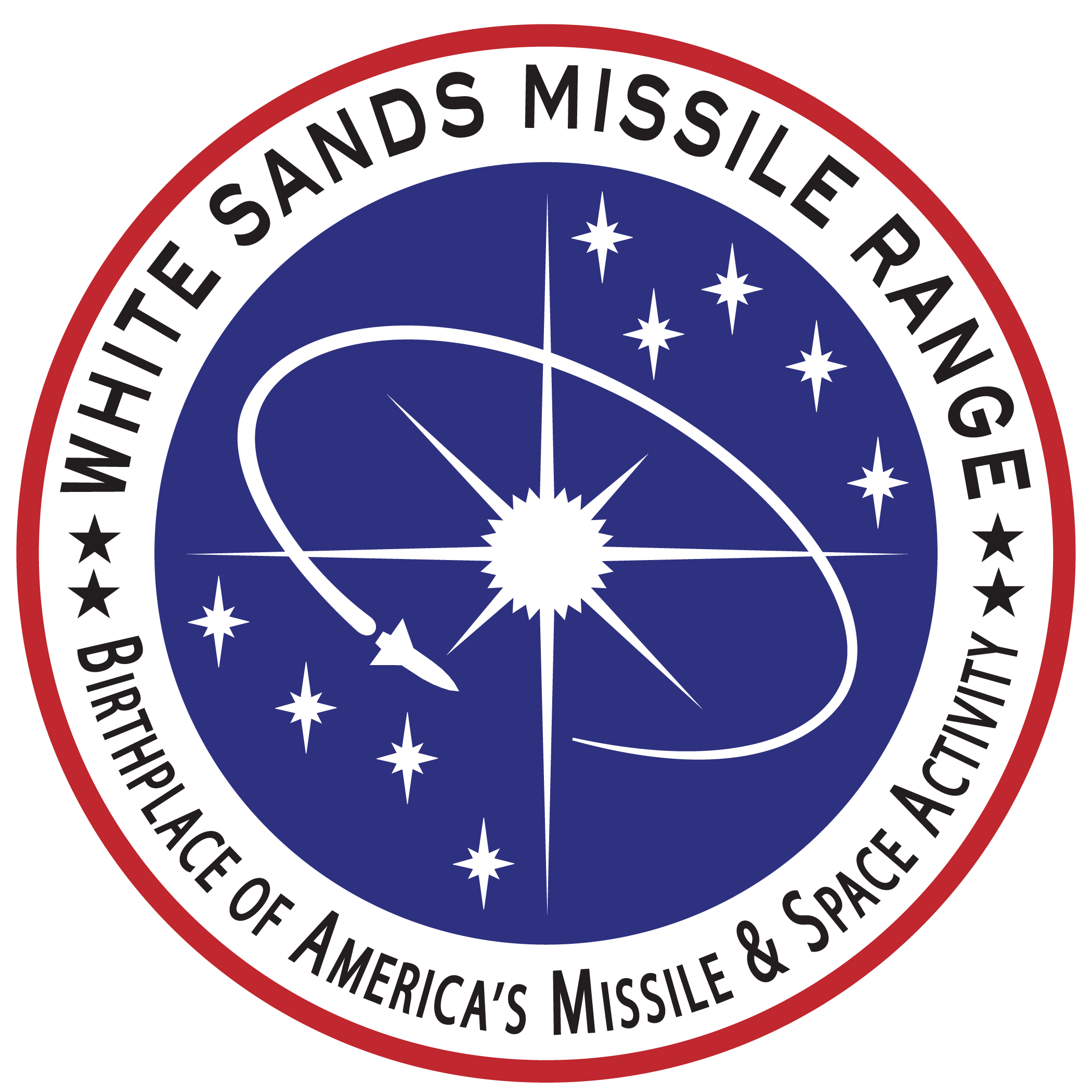
Patrick S. Quinlan was inducted into the White Sands Missile Range Hall of Fame Sept. 19 during a ceremony at the Frontier Club.
Patrick Quinlan inducted into Hall of Fame
Patrick S. Quinlan was inducted into the White Sands Missile Range Hall of Fame Sept. 19 during a ceremony at the Frontier Club.
Quinlan received a medal, a copy of the certificate that will hang in the Hall of Fame at the White Sands Museum, a lapel pin and an American flag flown over WSMR in his honor. WSMR Commander Brig. Gen. George Turner made the presentation.
Turner said Quinlan lived the Army values.
“He was the epitome of the Army’s civilian creed, a member of the Army team dedicated to our Army, Soldiers and Civilians. Always supporting the mission, providing leadership, stability and continuity during wartime and peace,” Turner said.
“Thank you for being an inspiration and a prophesy for today’s generation, who is running with the baton that you proudly carried for 42 years here at White Sands Missile Range.”
Quinlan thanked everyone for attending before telling several stories about WSMR during his 42 years.
His children, Kelly Simon and Edward Quinlan paid tribute to their father. His wife Jean Quinlan and several family members were also present.
Kelly, a teacher, said that growing up with her dad was like living in a science fiction book.
“He was doing GPS before there was GPS as we know it.”
Edward said he felt privileged and honored to be among what he considered heroes.
“Everybody here one way or another has contributed to saving lives.”
Quinlan was recognized for being a key planner and coordinator in the development and acquisition of the instruments and tools required by White Sands to test a vast array of American and foreign weapon systems and do it safely, decade after decade. In addition to being used here in New Mexico, many of those tools are used at other test ranges across the country.
In the 1960s, working as a staff engineer and then senior engineer, Quinlan was responsible for systems modernization, purchasing them, their evaluation, and installation. When a requirement came up to support Lance missile tests and some of the contracted equipment wasn’t ready yet, Quinlan designed, and hand built a unit to use in the interim. It worked and the project was able to test without any delays or shortage of data. His ingenuity and drive did not go unnoticed, and he was given more responsibility.
Eventually Quinlan was given the task of preparing the requirements and specifications for the missile range’s Telemetry Data Center which is the hub for all the data being generated during the test that would be transmitted to the ground by radio. This was a period of great advancement in solid state electronics and computers. Quinlan wrote up the specifications and made sure the proposed center was equipped with the newest equipment. Because it was on the cutting edge, the winning bid was not the lowest bid. Quinlan was then part of a team that went to higher headquarters and successfully defended the unusual award. The Telemetry Data Center was the most advanced facility at the time and continues to be updated to keep up with demands for its use.
In 1987, Quinlan was assigned as the chief of the Targets Control Branch. The political and military leaders who pay for or run the development of new weapon systems usually like to see them tested against realistic targets. At the time, Patriot, America’s most advanced air defense missile system, had a requirement to identify, track and destroy multiple jets flying in formation. Quinlan led a project to develop a computer-driven Drone Formation Control System (DFCS). Eventually it would fly, by remote control, six jet-propelled drones as targets for the Patriot to find and destroy.
After his retirement from Federal service in 1996, Quinlan continued working in the field as a consultant and a contractor at White Sands.
The White Sands Missile Range Hall of Fame was established in 1980 by Maj. Gen. Duard Ball who wanted a way to honor the people who built the missile range and continue to make it the premier testing facility in the Department of Defense. Since then, more than four dozen men and women, both military and civilian employees, have been inducted.
Miriam Rodriguez
WSMR Public Affairs




